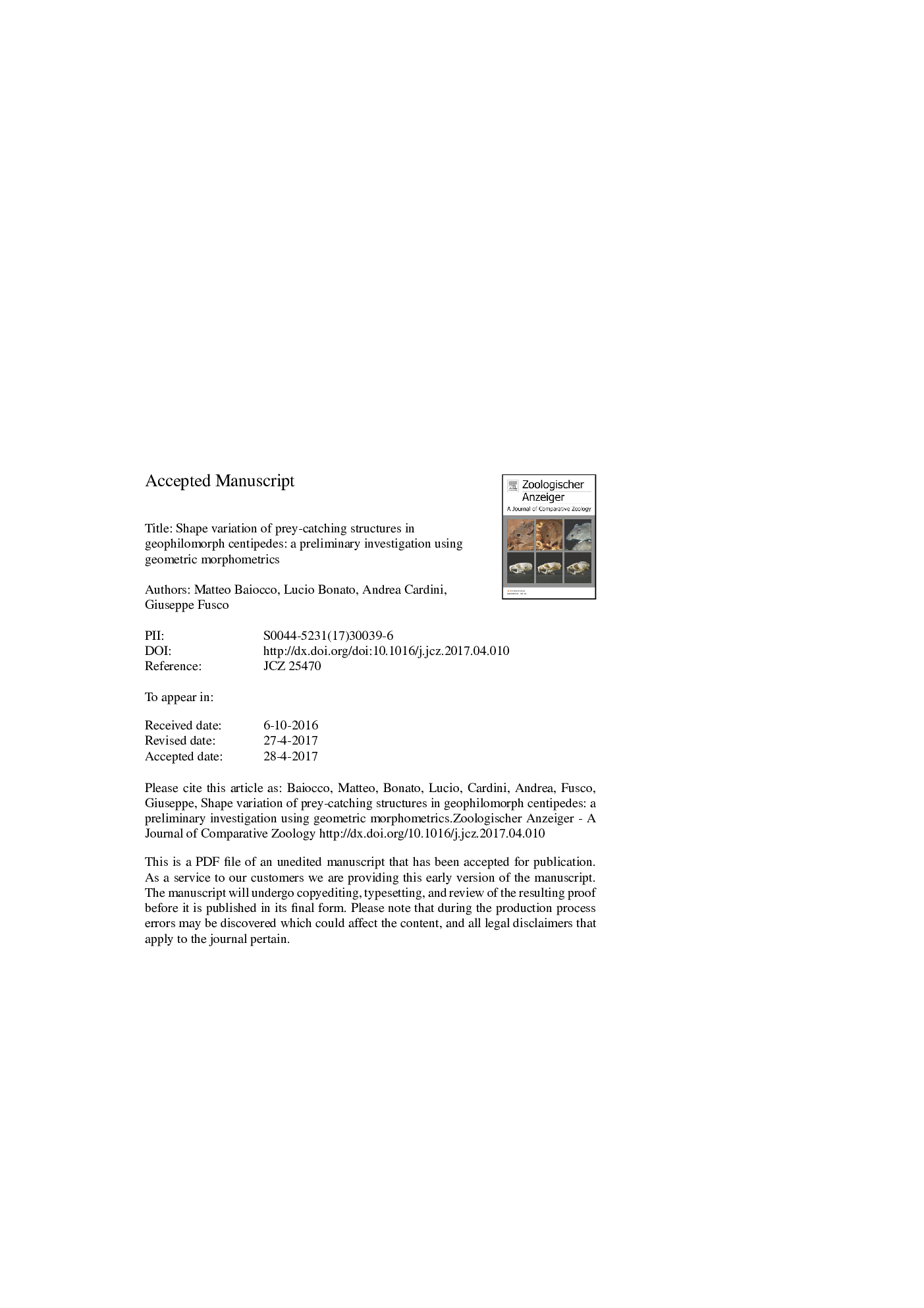| Article ID | Journal | Published Year | Pages | File Type |
|---|---|---|---|---|
| 5586471 | Zoologischer Anzeiger - A Journal of Comparative Zoology | 2017 | 26 Pages |
Abstract
Geophilomorph centipedes are common arthropod soil predators, but very little is known about their preying behaviour and their diet. Here we develop an exploratory morpho-functional approach to better understand their feeding habits, based on the morphology of feeding-related structures. Through geometric morphometrics, in a sample of five geophilomorph species, we investigated morphological variation in the three most conspicuous component structures of their prey-catching apparatus. At intra-specific level, we found no strong evidence for sexual dimorphism, left-right directional asymmetries and allometry across adult stages. At inter-specific level, shape differences in the feeding apparatus among the sample species were highly significant and large, even between two congeneric species. We also found a significant covariation between the shapes of the three structures, including those that do not directly articulate with each other, suggesting some degree of morphological integration between the different structures of the prey-catching apparatus. This study suggests the effectiveness and power of geometric morphometrics for the quantitative study of centipede functional morphology and provides a basis for wider comparative investigations on their phenotypic evolution.
Related Topics
Life Sciences
Agricultural and Biological Sciences
Animal Science and Zoology
Authors
Matteo Baiocco, Lucio Bonato, Andrea Cardini, Giuseppe Fusco,
